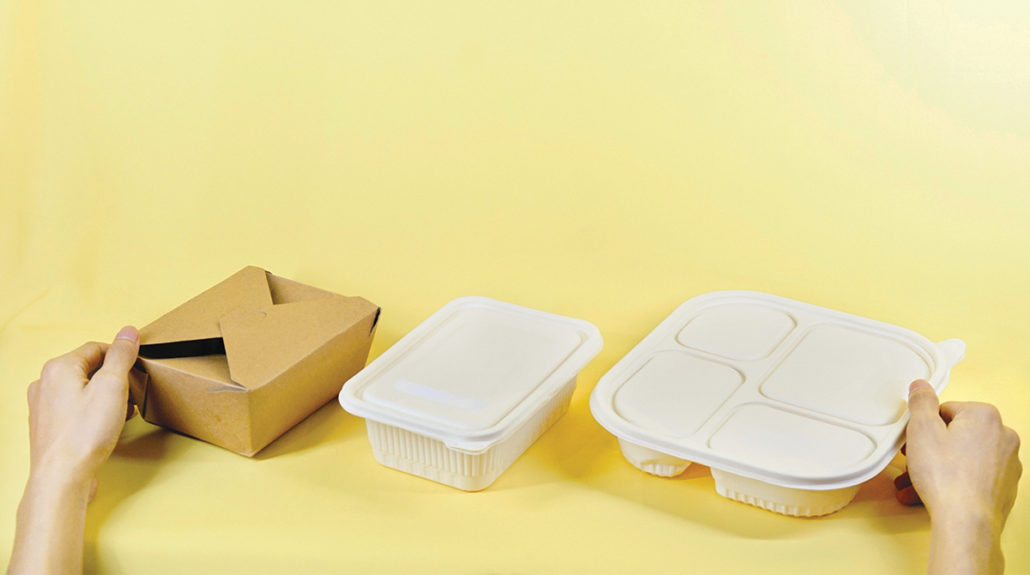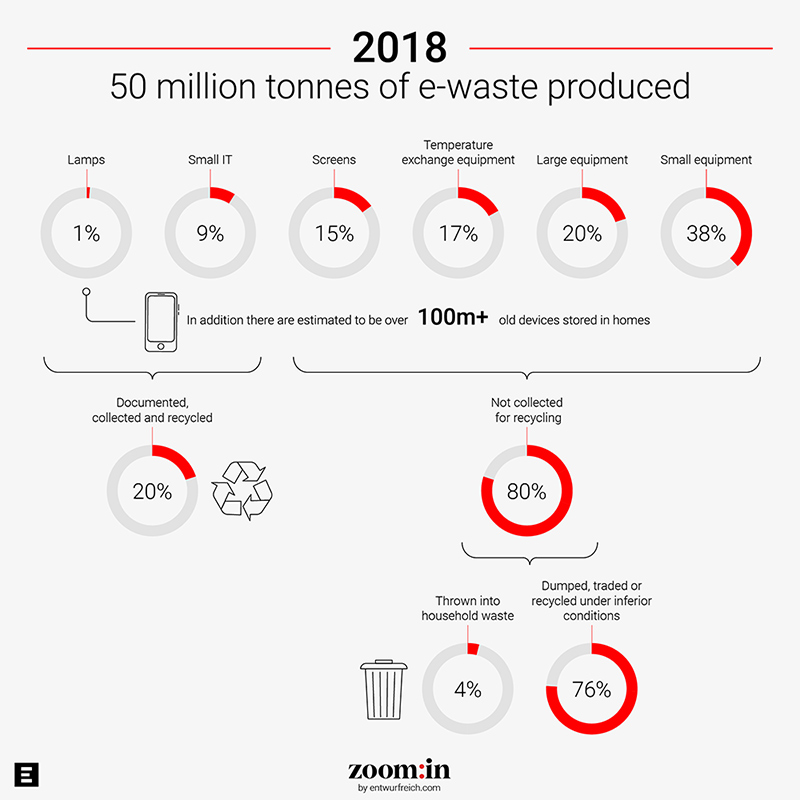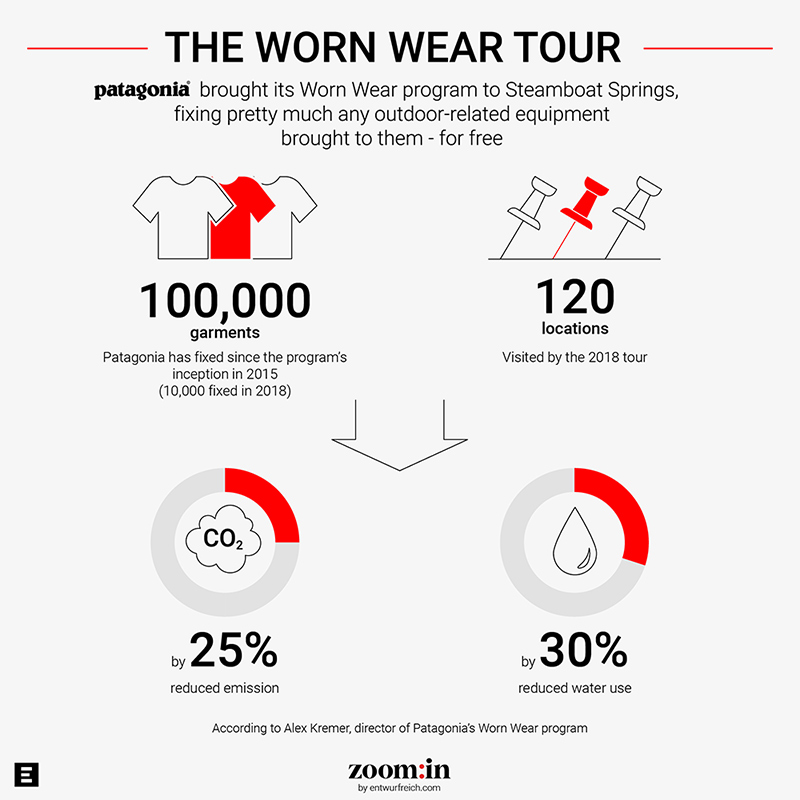
It’s more than just a catchphrase. It’s not hard for a company to slap the word “sustainable” on the side of their product in an effort to appeal to those who are concerned with what they are consuming or the span of their carbon footprint. In a world that is struggling with resource management and environmental challenges – true sustainable design is an essential idea to reducing both the resources we draw from and the eventual waste consumers justify.
In other words: a brand new device that costs as much as a mortgage payment shouldn’t be tossed aside after only a few years. Especially when that device contains the kind of precious metals that are difficult and toxic to mine from the ground.
I’m looking at you, the “I gotta have the newest tech all of the time.”
Who am I kidding? I am totally one of those people. I am a frequent adopter of the shiny-new-tech toys. But I also want to change the conversation around the appeal of new tech so we can change the way we approach, acquire, use, and renew the items that are increasingly difficult to recycle.
Defining “Sustainable Design”
At the core, sustainable design is a way of thinking about products as a closed loop – from cradle to grave and back again. This starts with imagining how the product can appeal to users today and become an integral part of their daily use even if their immediate needs change. Sustainable design focuses on what materials are used, how they are collected, and the manufacturing processes used to create the product. And, likely most importantly, what happens to the product at the end of its life?
When carefully considered, a sustainably designed product is useful today and not a burden in the future – especially when it becomes obsolete. Unfortunately, there are many companies who design their products with the idea of planned obsolescence. The idea: companies outline their revenue model by designing products in a way where the *entire* product must be replaced if something breaks. Think about most of the laptops available today: they are impossible to repair. If your keyboard or screen stops working, you can’t just open up the device to plug a new component in – you have to junk the entire machine and start fresh with something else. The result is an incredible pile of e-waste that is difficult to reuse.

[Where there’s electronics, there is electronic waste. Marketers love to focus on the former and ignore the latter.]
In fact, Apple is in hot water with the French government – claiming their repair program is discriminatory against those who want to repair their devices, forcing users to buy new products when a repair with third-party parts or service is entirely feasible. In this case, France is exercising the Harmon Law, enacted in 2014, as a way to protect humans and the environment from products designed with planned obsolescence in mind.
While there is a history of suspicion around the longevity of Apple’s devices (discontinuing certain ports, requiring new charging cables, no longer updating software for older devices, degrading battery life, etc.), they are just one of millions of players in the ecosystem. Sustainable design may be a closed loop, but it is far from an isolated process. Designers have to consider input from hundreds, if not thousands, of sources – from the consumer needs, stakeholder demands, material availability, and even foreign legislation that might impact their product.
Keeping on the theme of technology: consider the market for smartphone cases. From the cheaply made plastic and silicone skins to the elaborate hard cases with supplemental battery and storage, every new phone means a new tide of cases to protect them. As the phone becomes obsolete, so do the cases. And typically, the more feature-rich the cases, the less recyclable they are to the consumer.
We go beyond trends – we innovate.
Get news and ideas from ENTWURFREICH
Consider two companies who are taking steps in the right direction – Fairphone and Patagonia.
Fairphone is producing smartphones you can easily dig into. As in: you can replace the battery, the screen, the cameras and speakers. You can even update the USB ports. Twelve mini-phillips head screws hold the phone together, the components pop out easily, and replacement parts are available on the Fairphone website. Not only are they committed to reducing e-waste, but you no longer have to deal with repair techs and their commonly outsized prices to get your device working again.

[Environmental impact from Patagonia’s Worn Wear initiatives. ]
Patagonia – a long time player in the field of sustainability and environmentalism – makes sure their audience knows their products have a second life. Patagonia now hosts “Worn Wear” events where you can bring just about any of their products and they will help you repair it. Broken zippers, torn polyester, lost buttons – you can bring in your item and someone will help you get it back in working order. I’m certain they’d help you repair *any* item of clothing if it meant keeping it out of the landfill. They also buy back used Patagonia items which are then either recycled or refreshed to sell on their online store of used products. Fast fashion is one of the larger contributors to climate change, so anything we can do to keep synthetic materials out of landfills is a good move.
I don’t think sustainability should be a “hot topic” or a trend to ride. It seems a good deal of products that are marketed as “sustainable” are set aside from what is available on the mainstream as though they are an exclusive niche. As designers, products can be sustainable in their design, but it will be the market demands that determine if the sustainability aspect sticks around. Consumers will eventually need to come around to the idea that sustainability might not get the “sexy” appeal of a new, sleek product, but in the long run they (and their wallets) are benefiting from a product with a closed, or potentially infinite, use cycle.





